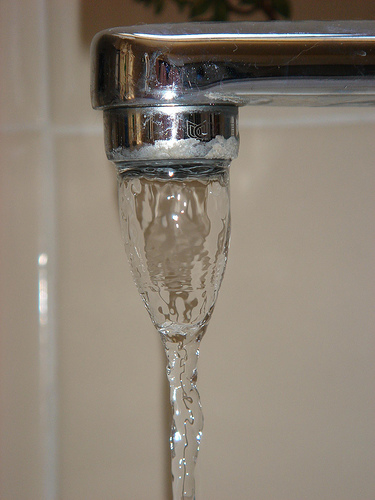Water Use Scenario Outcome

Photo by Flickr user 37prime
Despite a cool, humid climate, parts of the Chicago region face increased pressure on water supplies, especially communities relying on the deep bedrock aquifer (much of Will, Kane, McHenry, Kendall, and part of Lake Counties). Population and job growth will increase demand.
Reducing demand through the use of conservation best management practices and increased density will help ensure a sustainable future, as will policies that match demand to areas with relatively greater supply.
Water demand
In 2005, the region withdrew approximately 1,500 million gallons of water per day for domestic, commercial/industrial, and other uses. This does not include cooling water for once-through thermoelectric generation. The GO TO 2040 plan concentrates on residential water demand, which accounts for about 55% of the non-cooling water use ( preliminary estimate). By 2040, if current trends continue, residential water demand would increase by 244 million gallons per day ( preliminary estimate). The plan considers two ways of holding the line on this demand increase. First, increasing density decreases lot size, shrinking the yard that needs watering. Second, a suite of conservation best management practices (BMPs) – described in much more detail in the CMAP Regional Water Supply Plan – may be employed.
The impacts of each scenario on water demand are described below, estimating millions of gallons of residential water demand compared to the current trend (with a decrease considered to be an improvement). The base figure is 244 million gallons per day (mgd).
How would this scenario change from the current trend? |
|
|
Reinvest |
Improves |
|
Preserve |
Improves greatly |
|
Innovate |
Improves |
Change in water demand |
|
|
Reinvest |
-51% (124 fewer mgd) |
|
Preserve |
-86% (211 fewer mgd) |
|
Innovate |
-60% (152 fewer mgd) |
What strategies in this scenario caused this change? |
|
|
Reinvest |
Significantly higher development densities, or significantly smaller lots. Adoption of conservation BMPs by 10% of eligible households. |
|
Preserve |
Moderately higher development densities, or moderately smaller lots on average. Aggressive adoption of conservation BMPs by 50% of eligible households. |
|
Innovate |
Use of conservation design. Adoption of conservation BMPs by 30% of eligible households. |
Water source
The total amount of water used is not the only concern: the source of the water used matters too. Lake Michigan now serves over three-quarters of the population in the region, and there is room for it to serve additional population. Lake Michigan offers higher quality water with lower long-term impacts than its main alternative, groundwater. From this standpoint, a scenario will perform better if a larger fraction of new households in the region are able to access Lake Michigan as a source of drinking water.
The impacts of each scenario on growth in the Lake Michigan service area are described below, estimating the increase in households in the Lake Michigan service area compared to the current trend (with an increase considered to be an improvement). Under current trends (the base figure), 50% of new households would locate within the current Lake Michigan service area.
How would this scenario change from the current trend? |
|
|
Reinvest |
Improves |
|
Preserve |
Improves slightly |
|
Innovate |
No change |
Change in water demand |
|
|
Reinvest |
68% (535,514 more households) |
|
Preserve |
57% (451,211 more households) |
|
Innovate |
50% (389,735 more households) |
What strategies in this scenario caused this change? |
|
|
Reinvest |
Investments in infrastructure and policy changes to support significantly increased infill development. |
|
Preserve |
Investments in infrastructure and policy changes to support moderately increased infill development. |
|
Innovate |
This scenario did not change the location of growth compared to the current trend. |